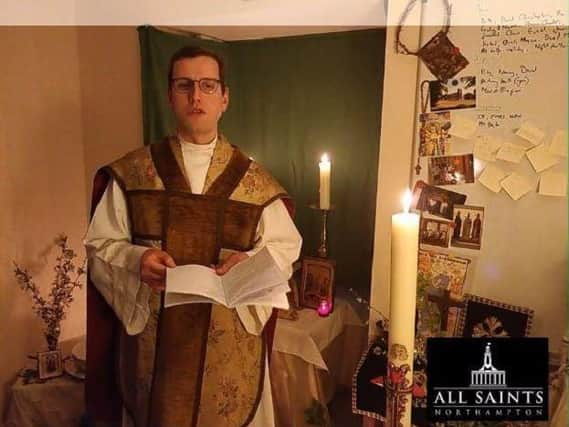Church is not cancelled...it is just being done differently


It’s Sunday night, as I write, and I’m characteristically working beyond my deadline with this article.
With luck it’ll arrive just in time, and I shan’t have let anyone down, but my mind was only jogged that I hadn’t written anything yet by sitting down to an episode of Have I Got News For You.
Advertisement
Hide AdAdvertisement
Hide AdIn these strange times, it looks strangely similar to our online after-church coffee hour, held over Zoom, though not this week as the aforesaid video conferencing application had a global outage which seemed, strangely, to coincide with many churches throughout the country trying to use it simultaneously.
Apparently, people do still pray after all and we’ll take a tiny bit of pride at having broken the internet because of it.
As a former computer scientist, I don’t say lightly that the technology has been among the most challenging parts of lockdown.
Principally, of course, that’s because not everyone can reach it, meaning that no matter how well you publicise or produce online content, there’s always going to be a significant number who can’t access it, or whose terrible broadband speed makes it a source of irritation rather than a means of comfort.
Advertisement
Hide AdAdvertisement
Hide AdThankfully, the BBC and the Church of England are among others who’ve used the traditional means of the phone, the wireless and the telly to do what I can’t from my front room.
But still I have the grumblings of my late-grandmother ringing in my ears as she pronounced (repeatedly) that ‘the internet wouldn’t come to any good’. I once asked her if her mother had said the same about the telephone, and after some thought she conceded that she might have said something like that.
The initial stages of social distancing and lockdown brought an immediate need to communicate online through available means, such that sticking a smartphone on a tripod and hitting ‘Go Live’ was sufficient.
As time has gone on, we’ve wanted to broaden the enterprise to include parishioners reading or contributing; our talented choristers singing in one of the incredible multi-track recordings they’ve made together from their own homes; or adding in recordings or videos from the sources of strength and inspiration I suspect we’re all seeking to draw on.
Advertisement
Hide AdAdvertisement
Hide AdSo, gradually, while keeping check on the amount of time and energy this all takes (and making sure it doesn’t become an occupation in itself) I’ve started to experiment with new bits of software, better ways of doing things, and opportunities to broadcast to the world exponentially more than just me in my study or – in the last few days since lockdown began to ease – in a church devoid of everyone bar me and my daughter, who, wonderfully, has been helping me out.
So now, a portable broadcasting studio comes with me on outings to church, easily assembled, ready to show the world that while the church isn’t open to the public, church is certainly not cancelled.
It just has to be different for a time. And in that regard I’m phenomenally fortunate to be able to carry on doing what I love and what I’m called to. A bit harder in parts, a little easier in others, but thank God for everything that keeps us going at the moment.